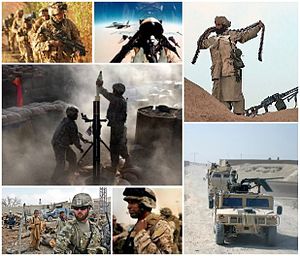Rahimullah Yusufzai
Thursday, July 26, 2012

Afghanistan has been a killing field from times immemorial due to foreign invasions and also the age-old tendency of its tribal population to settle deep-seated ethnic, sectarian and factional disputes by the use of force. Obviously, these past atrocities and killings haven’t been documented. However, an effort to document the carnage that took place during the 1990s in the Afghan civil war involving a struggle for power between armed factions has revealed disturbing information about 180 mass graves containing the remains of those summarily executed.
Some of the information is from the still classified 800-page report compiled by the Afghan Independent Human Rights Commission and titled, “Conflict Mapping in Afghanistan Since 1978.” It is a study of human rights abuses in Afghanistan from the communist Saur Revolution of April 1978 to the fall of the Taliban regime in December 2001.
One wishes the report is made public and acted upon to make accountable all the killers and human rights abusers, some of whom reportedly hold key positions in the government of President Hamid Karzai. Afghan communists, Mujahideen and Taliban who ruled Afghanistan in the past three decades, all have their share in ordering these atrocities, but no one has been put on trial. The political compulsions of the Afghan ruling elite and the play-safe attitude of the US authorities, who wield real power in Afghanistan and fear that the findings could trigger a new round of civil war, will ensure that the report isn’t made public in the foreseeable future.
In fact, the study was undertaken by the Karzai government as part of its reconciliation and justice effort in 2005. However, the government is now dragging its feet in releasing the report as President Karzai’s two vice-presidents, Marshal Muhammad Qasim Fahim and Karim Khalili, ministers and scores of others holding official positions have been named in it as perpetrators of some of the atrocities. Fahim, the former Tajik warlord and spymaster, and Khalili, a Shia Hazara strongman, along with many others forming the ruling elite, were involved in the factional, ethnic and sectarian strife that engulfed Afghanistan in the 1990s and made life hell for the Afghan people.

Bits of information of a general nature from the report have been leaked and published in the world media. Some of the 40 researchers, mostly human rights activists who took part in the study spread over six years, are now discreetly talking about their findings. They cannot talk about it publicly, fearing reprisals, and also due to the fact that the study is still classified. Hopefully, more information from the study will be leaked to put pressure on the Afghan government and its Western patrons to release the full report. If that were to happen, the pressure for making accountable the sponsors of mass killings will grow. Perhaps one day these people will be put on trial in the International Court of Justice, the highest judicial body of the United Nations, just as the Serbian warlords charged with genocide of Muslims in Bosnia-Herzegovina had to face trials. At present, though, it is wishful thinking, as most of them are in power or part of the armed opposition and are therefore beyond the reach of the law. Besides, some would argue that all sides to the long Afghan conflict are guilty of war crimes and that taking revenge is part of Afghan life rather being something unusual. Also, some Afghans believe that digging up the past will revive painful memories that ought to be forgotten and, if possible, perpetrators forgiven.
According to media reports, the Afghan study completed in December 2011 provides locations of the 180 mass graves of civilians or prisoners. Many of these sites are secret and none has yet been properly excavated. Only one mass grave found on the grounds of the interior ministry in Kabul was exhumed forensically. There is also mention of a half-excavated mass grave outside Mazar-i-Sharif, capital of the northern Balkh province, where researchers found 16 victims with skulls pierced by a single bullet at the back. To make the study credible, testimony from survivors and witnesses to the killings and other war crimes was recorded. Advice of some of the world’s top experts in forensics was made available to the Afghan Independent Human Rights Commission.
Despite denials by the Afghan government, the removal of the Afghan Independent Human Rights Commission’s long-time head Ahmad Nader Nadery after completion of the study has been linked by some Afghans to the report on the mass graves. It has been suggested that he was sacked by Karzai due to pressure from some of his close lieutenants and allies such as Vice-President Fahim. It is a fact that Nadery had served two five-year terms and President Karzai was empowered to replace him, but the timing of his removal raised eyebrows and caused concern that it was linked to the damning report of the commission about the involvement of some key members of the Karzai administration in past atrocities.
Based on the available information concerning the study’s findings, many known warlords and commanders of the former communist militias, Mujahideen and Taliban have been blamed for the atrocities. Apart from the two vice-presidents, Fahim and Khalili, Uzbek warlord Gen Abdur Rashid Dostum, who holds the honorary title of chief of staff to the supreme commander of the Afghan armed forces, has also been named in the report. Dostum, who has been part of every Afghan government starting from the communist regimes when he led the ruthless Gilum Jam militia, is invariably mentioned whenever the issue of mass killings and human rights violations in Afghanistan is discussed. This hasn’t stopped Karzai, other Afghan politicians and factional leaders, and also the US, Russia, Turkey, Uzbekistan and some more countries, from courting him and showering him with favours.
Dostum may be everyone’s fall guy, but according to the study his rival Tajik warlord, Gen Atta Mohammad Noor, a leader of the late Prof Burhanuddin Rabbani’s Jamiat-i-Islami and presently the governor of Balkh province, has also been involved in some of these atrocities. However, he has largely escaped any negative attention, even though the study shows that his administration in Mazar-i-Sharif has been accused of covering up some of the mass graves by undertaking new construction projects on those sites. His party was also accused of maintaining a “human slaughterhouse” on one such site, which was later allegedly taken over by the Taliban and used for the killing of their opponents.
It isn’t surprising that former defence minister and Tajik warlord Ahmad Shah Masood, named a national hero by the Karzai government, also has been listed among the more than 500 Afghans held responsible in the report for the mass killings. As a Mujahideen commander and later as defence minister, he fought against his many rivals to maintain control and sustain himself in power, and during the course of the fighting his men killed their opponents with impunity.
Former Mujhaideen leader Gulbaddin Hekmatyar, who was a rival of Masood, too has been listed among the perpetrators of mass killings and so have been Taliban commanders Mulla Fazil Akhund and Mulla Khairullah Khairkhwa, both languishing at the Guantanamo Bay detention centre and likely to be freed in case the Taliban and the Americans reach a prisoners’ swap deal in their now suspended talks in Qatar. It wouldn’t be surprising if the names of warlords such as Prof Sayyaf, Ismail Khan, Mohammad Mohaqqiq, Gen Abdul Malik, Mullah Dadullah are also found among those accused of mass killings in the report.
As many mass graves have been found in northern Afghanistan, it shows that the killings were systematically carried out by warlords there. Many such graves in the Dasht-i-Laili desert in Dostum’s native Jauzjan province, where up to 2,000 Taliban prisoners were buried, have already been covered up to destroy evidence. However, most Afghans don’t need evidence because they are aware that mass killings did take place and the killers are still at large. They also know the killers and their patrons, but their government cannot release the report or take action against those named in it because some of these men are occupying key official positions.
The writer is resident editor of The News in Peshawar. Email: rahimy usufzai@yahoo.com
Comment: It seems that, similar to Mexico, Afghan has had a long history of official theft and corruption. Many people have gotten rich because of the Afghan war, especially U.S. producers and exporters ot arms. Let us pray the people of Afghanisnam (spelled thus in memory of the VietNAM war) can someday be able to enjoy the fruits of liberty and justice for all, which is touted in the Amerikan Pledge of Allegiance.
~ Peter S. Lopez AKA @Peta_de_Aztlan
+++++++++++++++++++++++++++++++++
HELP-Matrix Humane-Liberation-Party Blog
http://help-matrix.blogspot.com/
Humane-Liberation-Party Portal
http://help-matrix.ning.com/
@Peta_de_Aztlan Blog
http://peta-de-aztlan.blogspot.com/
On Twitter @Peta_de_Aztlan
+++++++++++++++++++++++++++++++++




